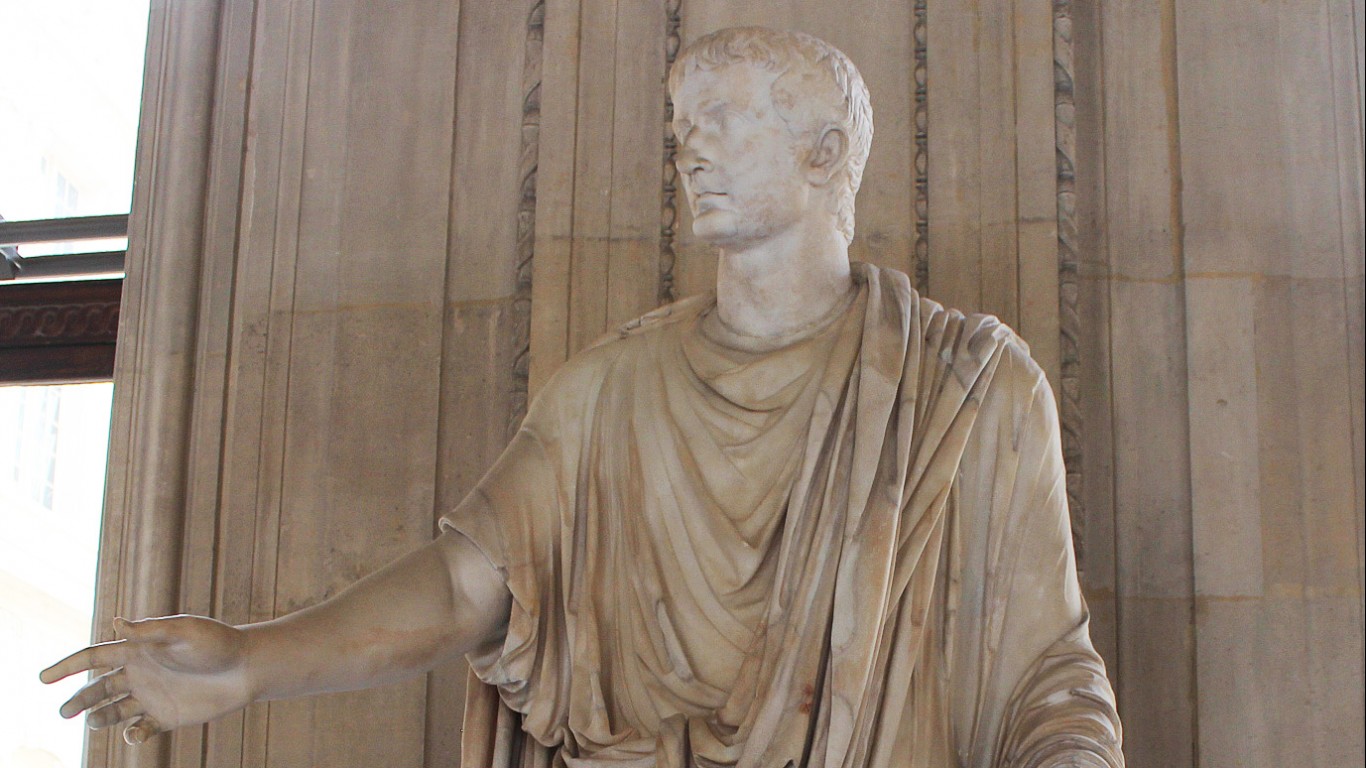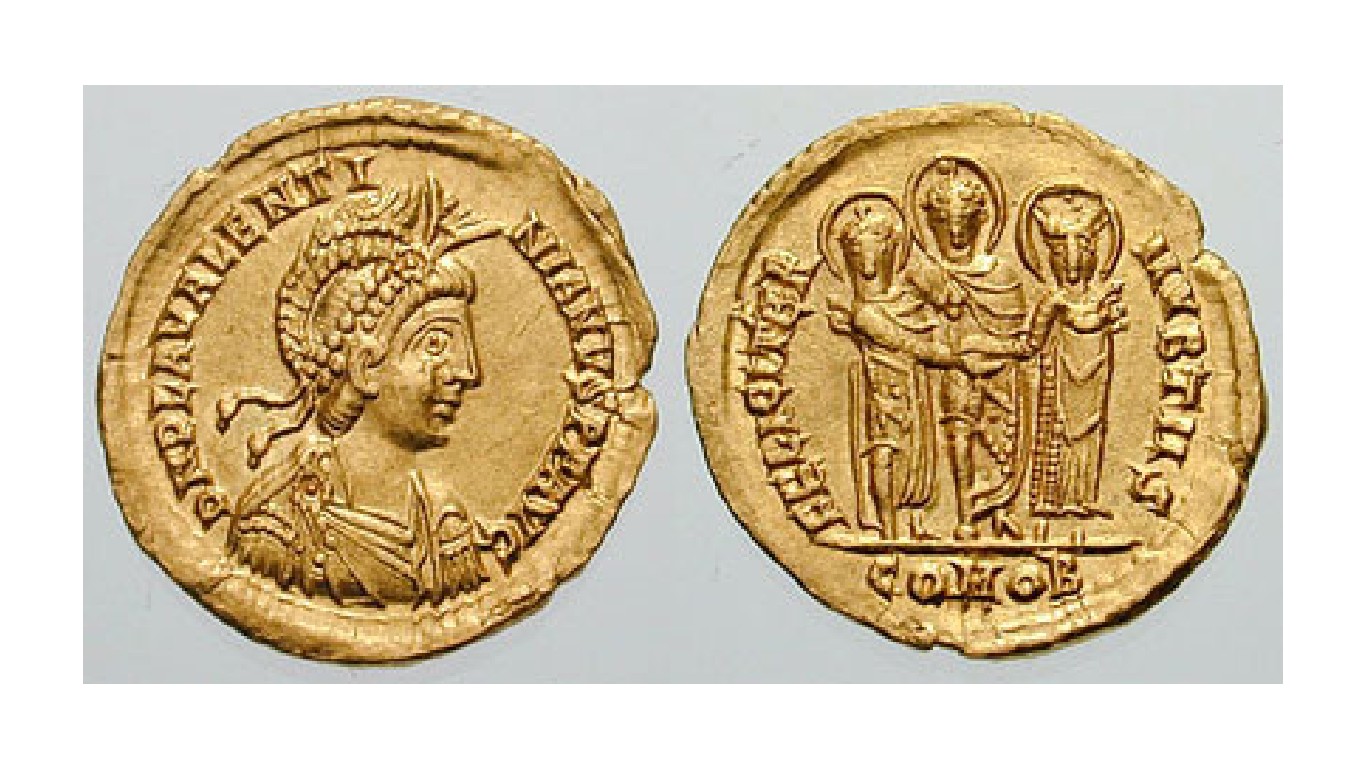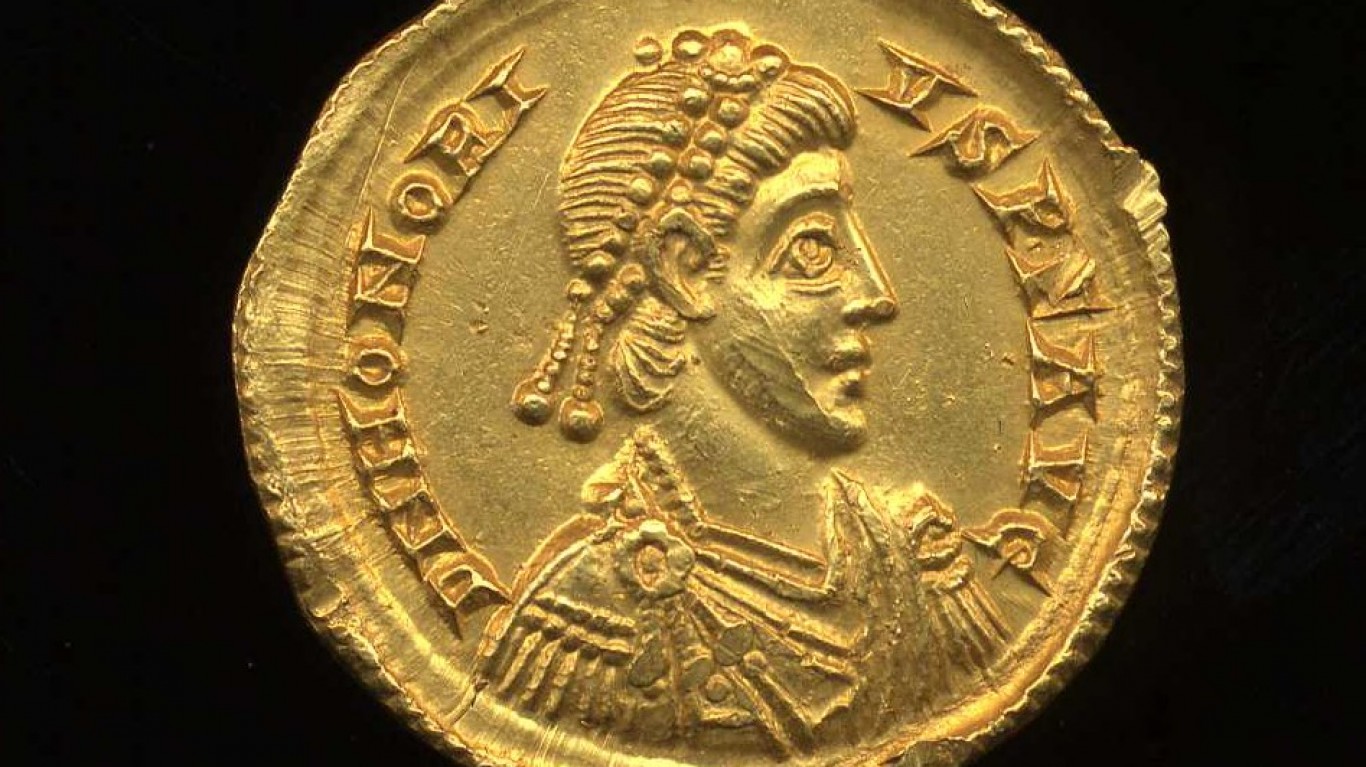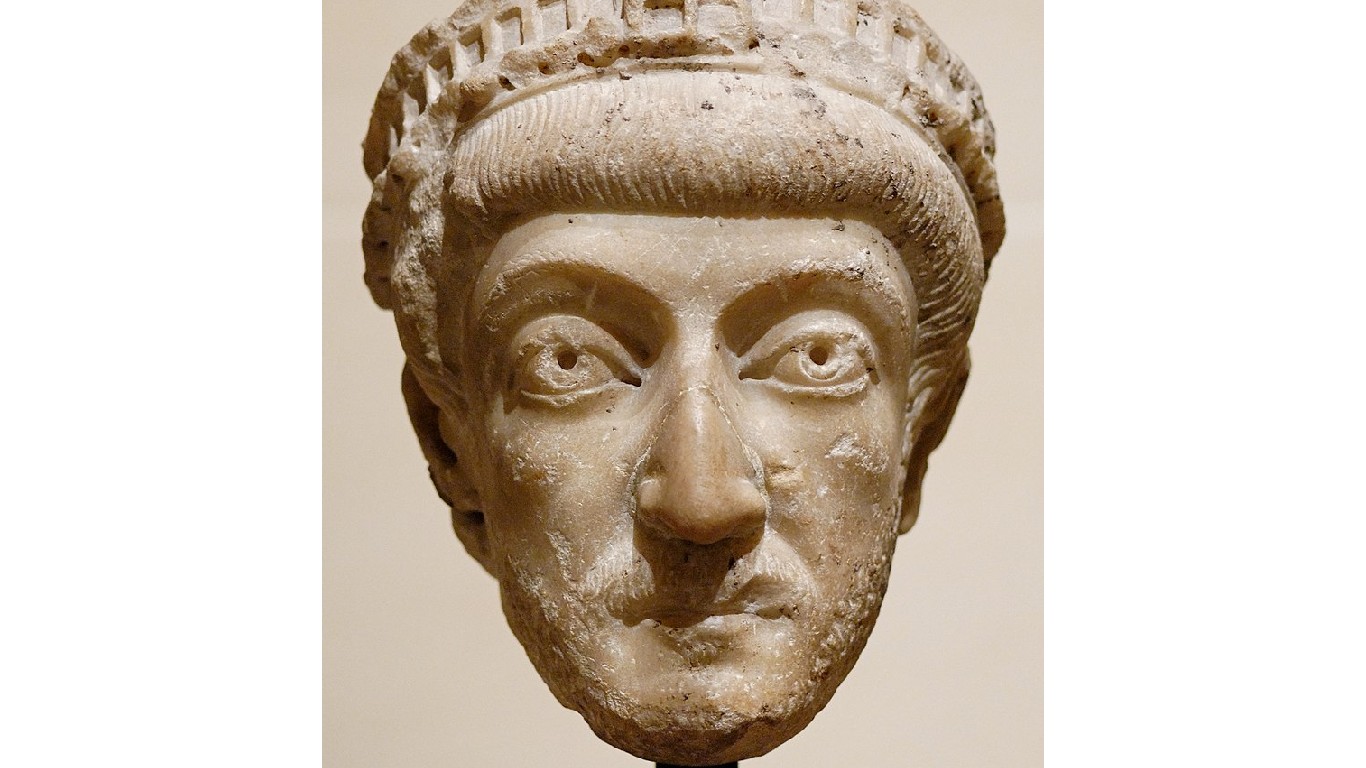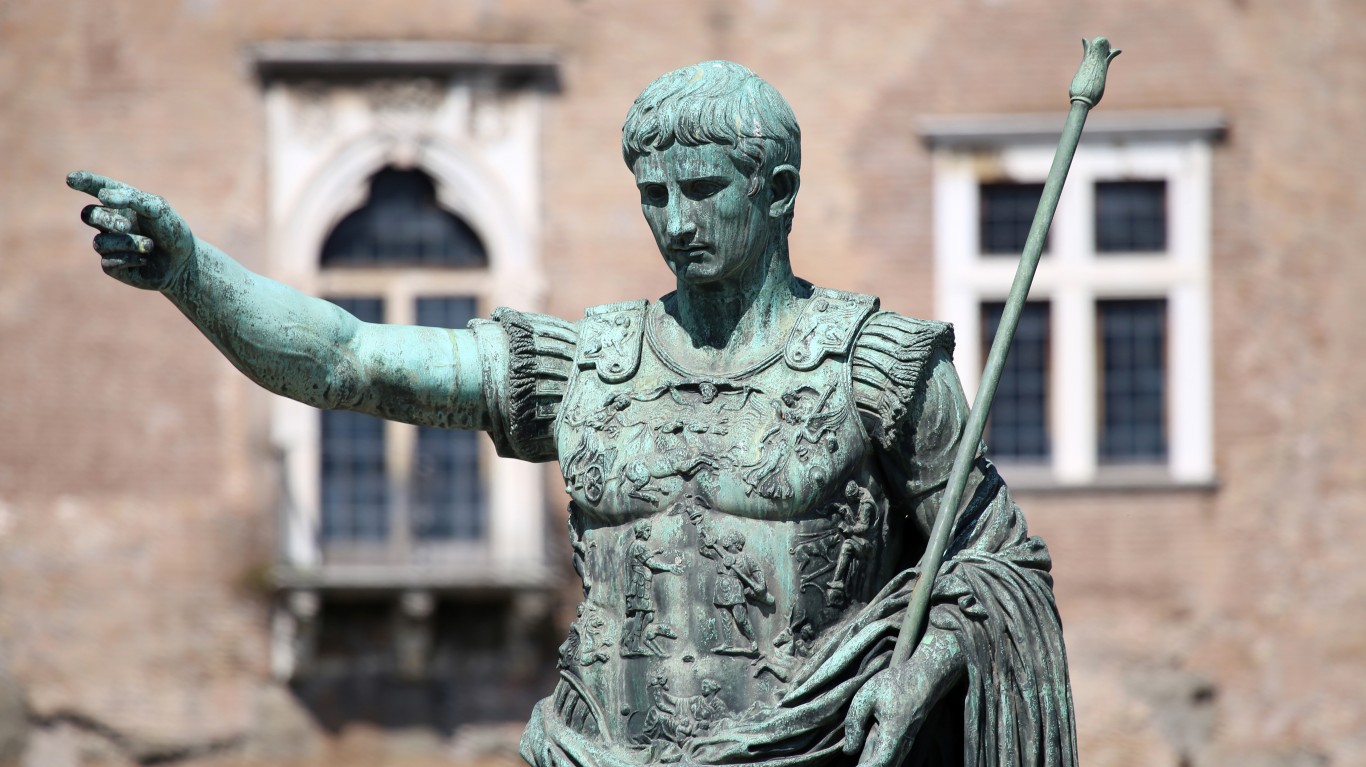
The latter days of the Roman Republic, which preceded the Roman Empire, were marred by political instability, as senators conspired against one another to hold onto power at the expense of the people. Political factions confiscated property of the common folk, abused the rule of law, and even killed one another in pursuit of their own goals — the most famous assassination being that of Julius Caesar in 44 B.C.
After Caesar’s adopted son, Octavian, defeated Mark Antony and Cleopatra in 31 B.C., he became ever more powerful — until the Roman Senate decreed him emperor with the title “Augustus” (“great” or “venerable”) in 27 B.C., in effect establishing the Roman Empire as we know it. (Over the next two centuries, Rome grew to become the most populous of the mega-cities of the ancient world).
For the next five centuries until its dissolution, Rome’s fortunes would oscillate wildly between prosperity and decline, as the fate of millions of people within its ever-expanding borders were intimately tied to the sentiments (and mental state) of its emperor. (Here are the 50 most powerful leaders of all time).
Not every emperor had the same influence on Rome’s people. While most Roman emperors ruled for many years, at one time there were different ones in a single year. Some emperors were good rulers and are remembered for their military victories and the edifices they built. Plenty of other ones were defined by their mediocrity and insignificance.
Click here to see the longest reigning Roman emperors
24/7 Tempo has assembled a list of the 25 Roman emperors with the longest reigns by consulting the Britannica’s timeline and individual articles on every emperor in the unified or western Roman Empire. Details on their reign also came from Britannica. Note that the list includes only emperors who came to power between the birth of the empire in 27 B.C. and 476, the year the last of them, Romulus, was defeated by the barbarian soldier Odoacer. That event is considered to have marked the end of the Roman Empire in the west and of Ancient Rome.
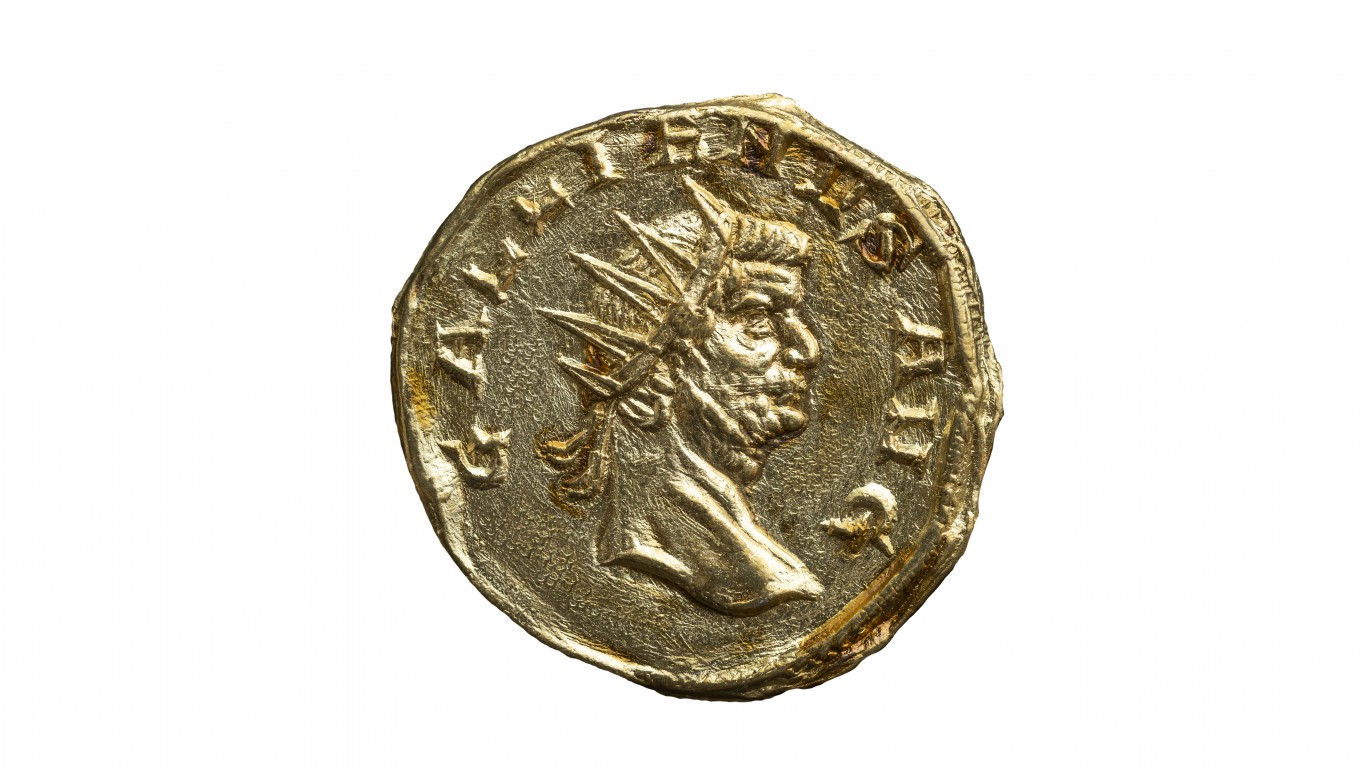
25. Gallienus (218-268)
> Reign: 253-268 (15 years)
Gallienus spent nearly all of his reign fighting off invaders, with some success. He reorganized the military and sponsored a period of artistic flourishing in Rome between 262 and 267.
[in-text-ad]
24. Commodus (Aug. 31, 161-Dec. 31, 192)
> Reign: 177-192 (15 years)
Commodus was known for being paranoid and insane, often killing anyone he thought was plotting against him. He was so bad that his advisors had a champion wrestler strangle him.
23. Domitian (Oct. 24, 51-Sept. 18, 96)
> Reign: 81-96 (15 years)
Domitian was the second, less popular son of Vespasian, becoming emperor after the death of his elder brother, Titus. He was known to be cruel and a poor manager of finances, and was assassinated by his wife and several court officials.
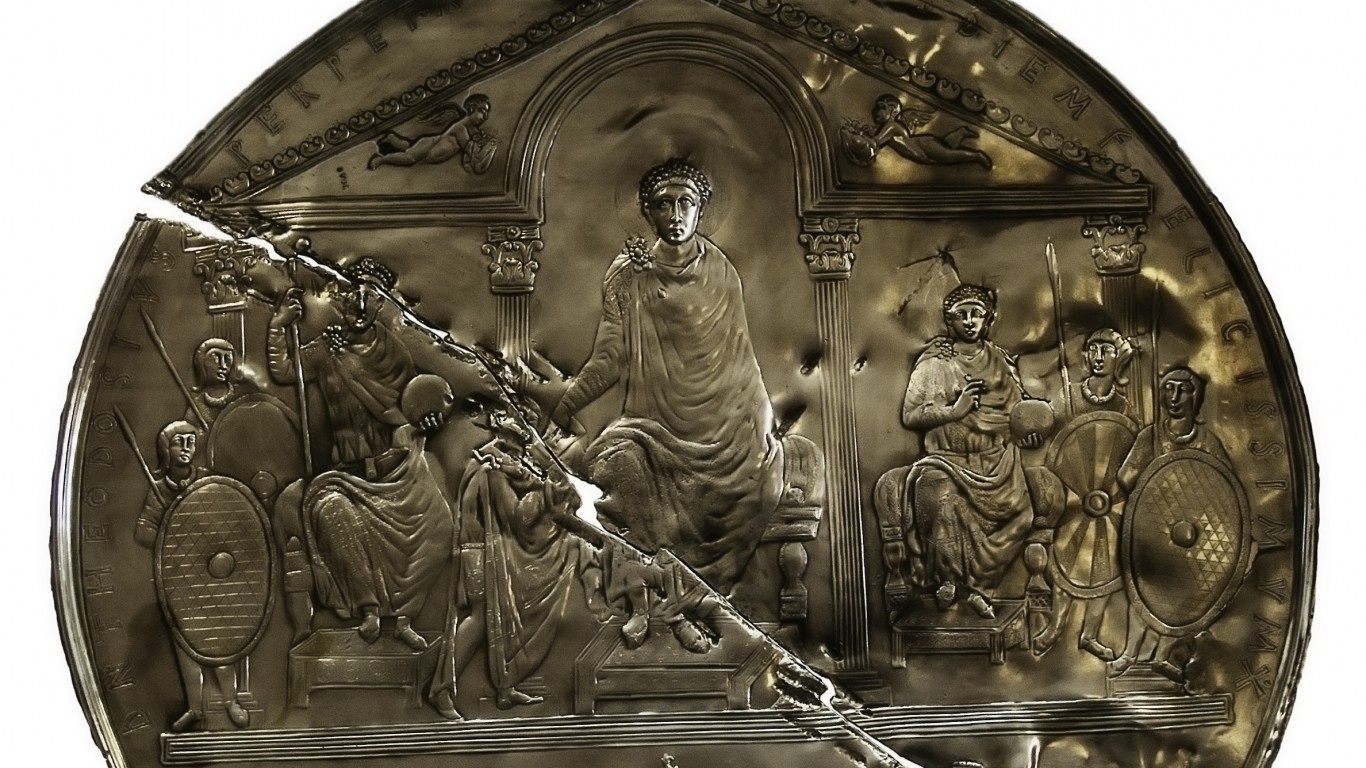
22. Theodosius I (Jan. 11, 347-Jan. 17, 395)
> Reign: 379-395 (16 years)
Theodosius I, known as Theodosius the Great, is famous for his roles in establishing the Nicaean Creed and the Second Council of Constantinople. He died after a long campaign against a rebel army near the Frigidus River.
[in-text-ad-2]
21. Gratian (359-Aug. 23, 383)
> Reign: 367-383 (16 years)
Gratian spent most of his rule in Gaul fighting Germanic tribes, with varied success. When Magnus Maximus was declared emperor in Britain, Gratian’s troops deserted him and he was later killed.
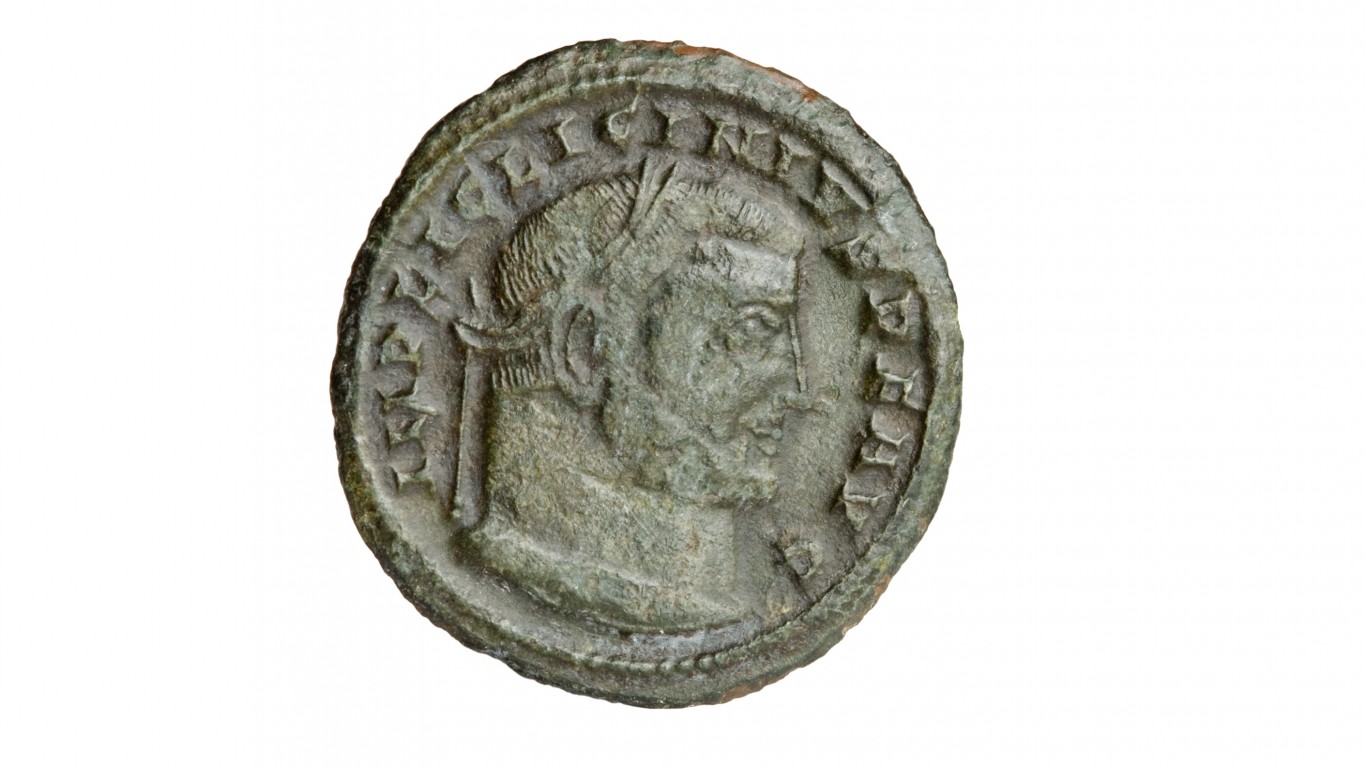
20. Licinius (265-325)
> Reign: 308-324 (16 years)
Licinius was made an Augustus (a title, meaning “great” or “venerable,” assumed by Roman emperors after the death of the Roman Empire’s first emperor, Caesar Augustus) by his friend the emperor Galerius. He is known for his edict of 313 granting tolerance to Christians and restoring their property previously confiscated.
[in-text-ad]
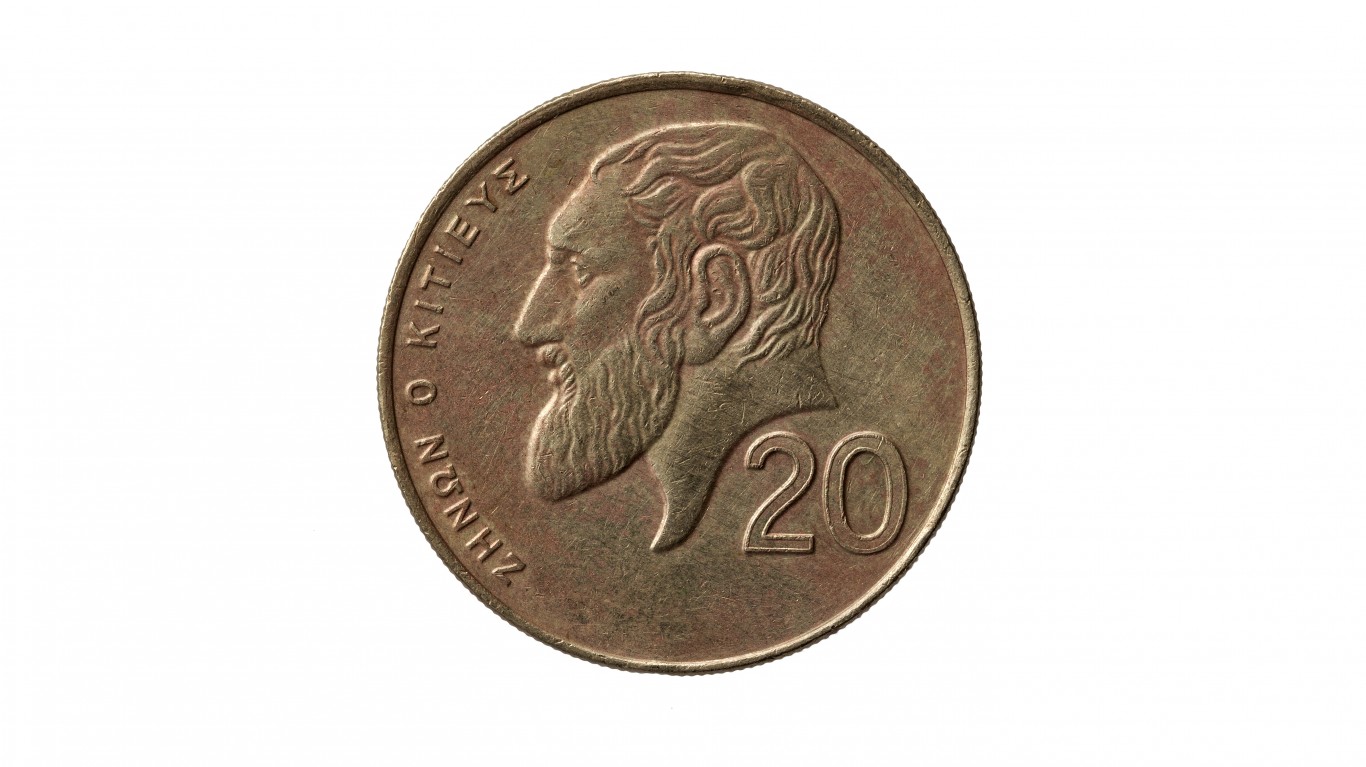
19. Zeno (425-April 9, 491)
> Reign: 474-491 (17 years)
Zeno spent most of his rule dealing with conflicts abroad and within the Catholic Church. He is known for the peace treaty with the Vandals in North Africa as well as the Henotikon, an ultimately unsuccessful attempt to keep the Church unified.
18. Leo I (401-Feb. 3, 474)
> Reign: 457-474 (17 years)
Leo I was an Orthodox Christian emperor, famous for his disastrous loss against the Vandal king Gaiseric in 468.
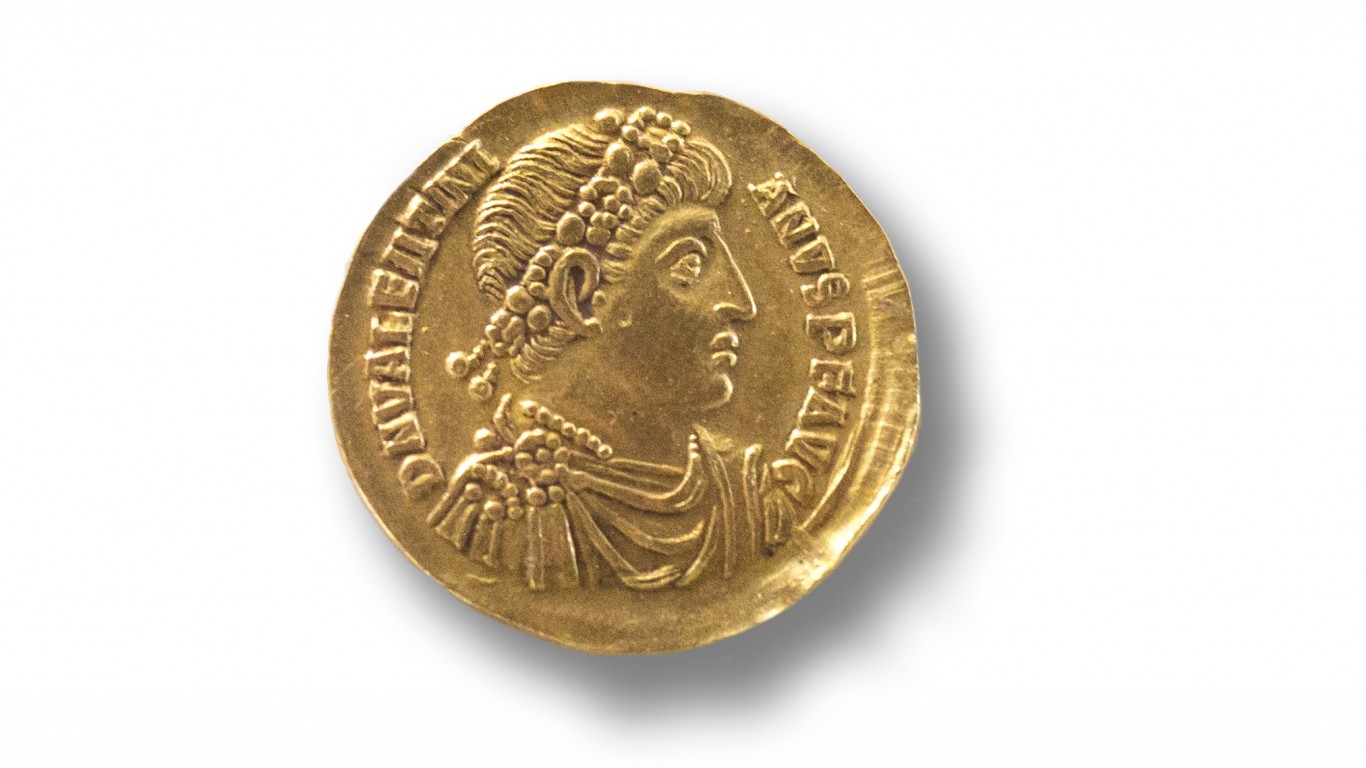
17. Valentinian II (371-May 15, 392)
> Reign: 375-392 (17 years)
Crowned at four years old, Valentinian spent most of his rule dominated by his mother and chased by those wishing to kill him. He was found dead in his palace in Vienne in 392. His murder remains unsolved.
[in-text-ad-2]
16. Septimius Severus (April 11, 145-Feb. 4, 211)
> Reign: 193-211 (18 years)
Severus was declared Emperor of Rome by his troops in the Danube, and he entered Rome with little opposition. He maintained power by appealing to the army, raising their pay, and allowing them to get married.
15. Arcadius (377-May 1, 408)
> Reign: 383-402 (19 years)
Arcadius was the frail son of and co-emperor with Theodosius II. He did very little, as his ministers ran his court.
[in-text-ad]
14. Maximian (250-310)
> Reign: 286-305 (19 years)
Maximian was raised to the level of Augustus of the West by Diocletian, and essentially carried out his patron’s orders for the remainder of his imperial rule. He committed suiсide in Marseille after the revolt he organized against Constantine failed.
13. Marcus Aurelius (April 26, 121-March 17, 180)
> Reign: 161-180 (19 years)
After decades of mentorship in the court of Antoninus Pius, Marcus Aurelius emerged as one of the most effective and wisest Roman emperors ever. He was often called the Philosopher King, managing his empire while also writing works on Stoic philosophy.

12. Caracalla (April 4, 188-April 8, 217)
> Reign: 198-217 (19 years)
Caracalla was brutal and cruel, both to his allies and his enemies abroad. He was unstable and hated by the people, but his soldiers loved him and forced the Senate to deify him after his death.
[in-text-ad-2]
11. Trajan (Sept. 15, 53-Aug. 9, 117)
> Reign: 98-117 (19 years)
The adopted son of Nerva, Trajan is known for his major public spending and the construction of great roads and aqueducts. He also waged wars as far afield as Romania and the Persian Gulf.
10. Diocletian (245-316 )
> Reign: 284-305 (21 years)
A politician and statesman through and through, Diocletian spent considerable time reorganizing the empire into eastern and western sections, in order to better manage the borders. The last major Roman persecution of Christians also took place under his reign.
[in-text-ad]
9. Hadrian (Jan. 24, 76-July 10, 138)
> Reign: 117-138 (21 years)
A lifelong admirer of Greek architecture and culture, Hadrian worked all his life to consolidate his vast empire and build impressive tributes to the past. He rebuilt the Pantheon in Greek architectural style, as well as Hadrian’s Wall in Britain.
8. Tiberius (Nov. 16, 42 B.C.-March 16, 37)
> Reign: 14-37 (23 years)
Tiberius was an astute general whose wars established the northern frontier of the empire. He was frequently described as reclusive and cold, with little interest in being a ruler.
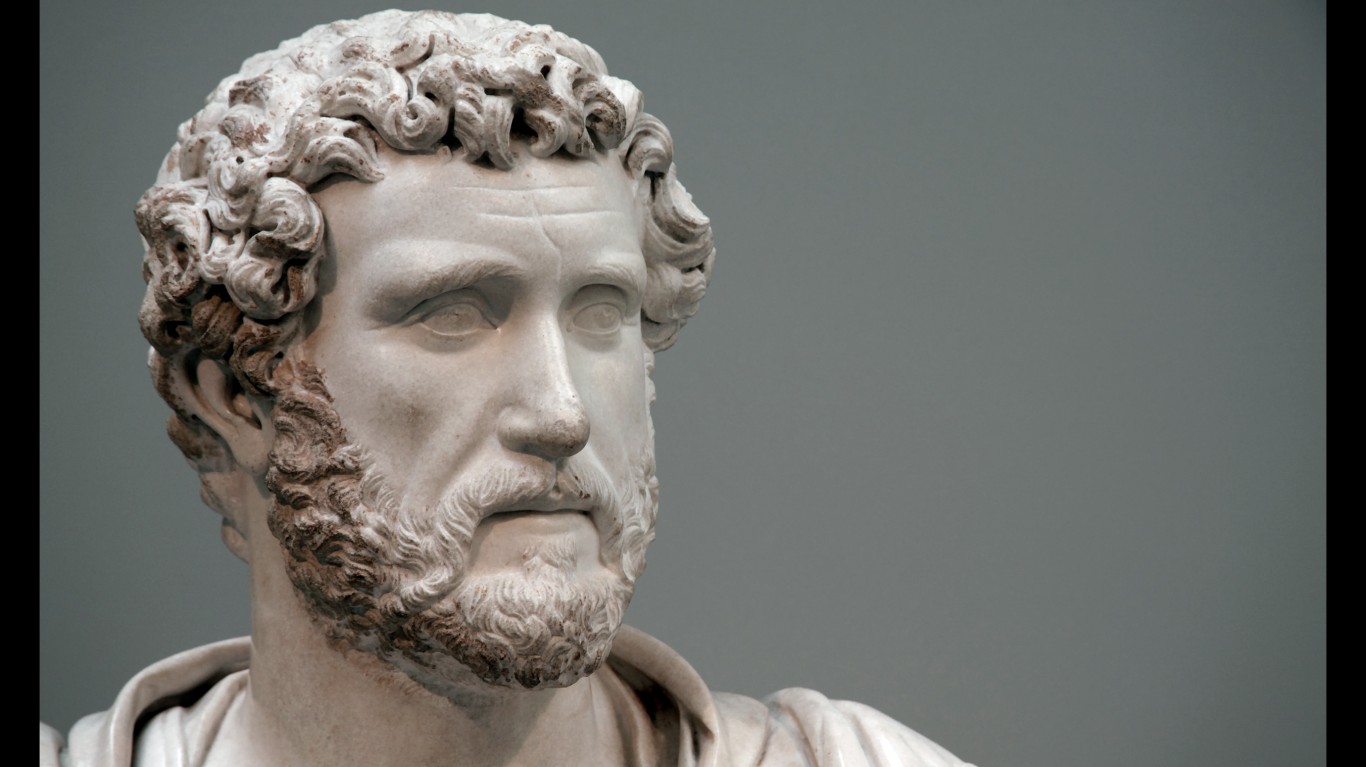
7. Antoninus Pius (Sept. 19, 86-March 7, 161)
> Reign: 138-161 (23 years)
Antoninus Pius guided Rome through an extended time of peace and prosperity. He would suppress small revolts across his empire and extend the empire’s borders in Britain beyond Hadrian’s Wall.
[in-text-ad-2]
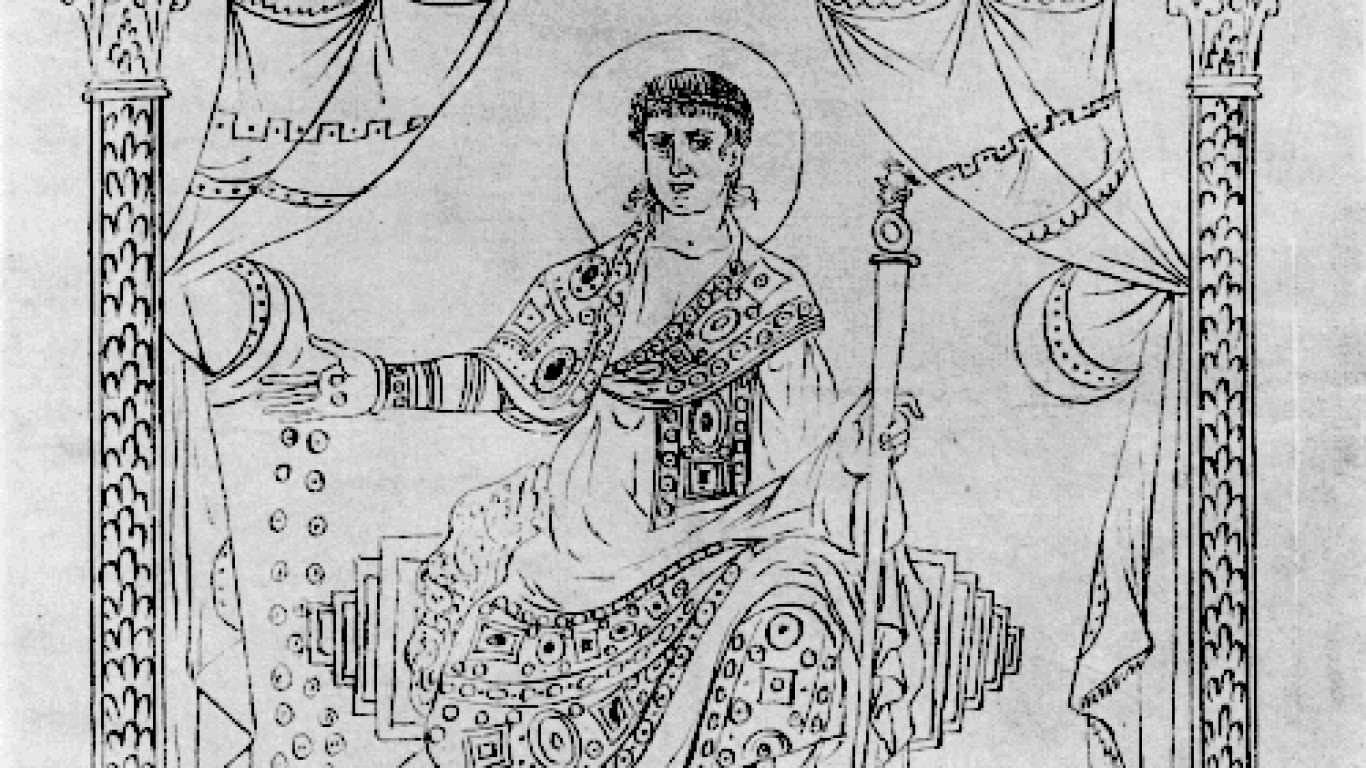
6. Constantius II (August 7, 317-Nov. 3, 361)
> Reign: 337-361 (24 years)
Constantius II, the third son of Constantine the Great, spent most of his rule fighting neighboring kings as well as threats within his own empire. He tried very hard to unify the empire under Arian Christianity, but ultimately failed.
5. Valentinian III (July 2, 419-March 16, 455)
> Reign: 425-455 (30 years)
Valentinian never played a significant role in his own government, and spent most of his life pursuing personal pleasure. He witnessed the Vandals rampaging across the Empire and annexing North Africa, but couldn’t do anything to stop them.
[in-text-ad]
4. Honorius (Sept. 9, 384-August 15, 423)
> Reign: 393-423 (30 years)
Becoming emperor at age 10, Honorius oversaw a terrible period in Roman history as northern tribes plundered the empire and occupied Rome. He is widely considered one of Rome’s worst emperors.
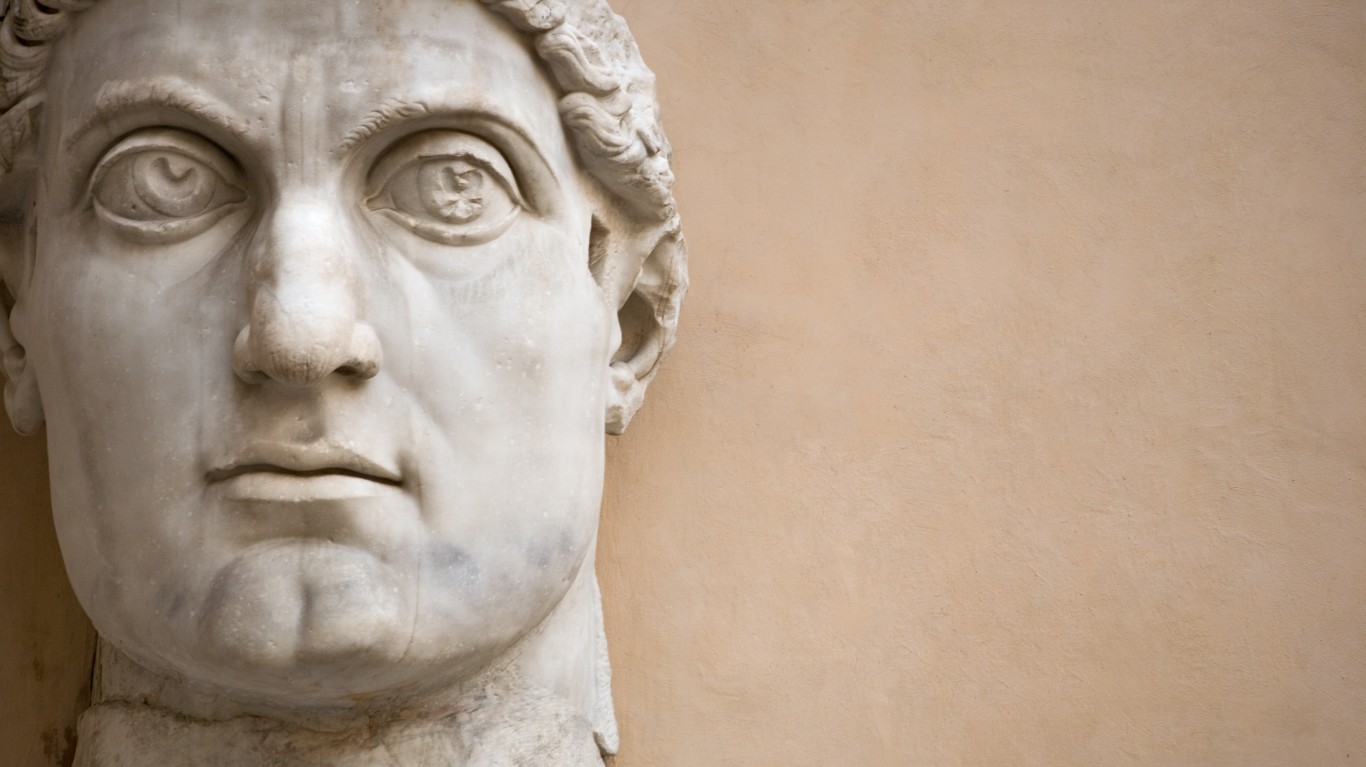
3. Constantine I (Feb. 28, 280-May 22, 337)
> Reign: 306-337 (31 years)
Constantine’s reunification of the empire and conversion to Christianity had significant effects on the future of Europe and Asia. He organized the Council of Nicaea in 325 and completed the transfer of political power from Rome to Byzantium.
2. Theodosius II (April 10, 401-July 28, 450)
> Reign: 408-450 (42 years)
Theodosius was a quiet and passive emperor who allowed his government to be controlled by others. He established the University of Constantinople, and made significant reforms to the law.
[in-text-ad-2]

1. Augustus (Sept. 23, 63 B.C.-August 19, 14)
> Reign: 31 B.C.-14 (45 years)
Adopted by Julius Caesar, Augustus ascended to the throne at the age of 18 and was the longest reigning emperor in Rome’s history. Began border expansion and established the backbone of Roman rule.
Get Ready To Retire (Sponsored)
Start by taking a quick retirement quiz from SmartAsset that will match you with up to 3 financial advisors that serve your area and beyond in 5 minutes, or less.
Each advisor has been vetted by SmartAsset and is held to a fiduciary standard to act in your best interests.
Here’s how it works:
1. Answer SmartAsset advisor match quiz
2. Review your pre-screened matches at your leisure. Check out the advisors’ profiles.
3. Speak with advisors at no cost to you. Have an introductory call on the phone or introduction in person and choose whom to work with in the future
Thank you for reading! Have some feedback for us?
Contact the 24/7 Wall St. editorial team.
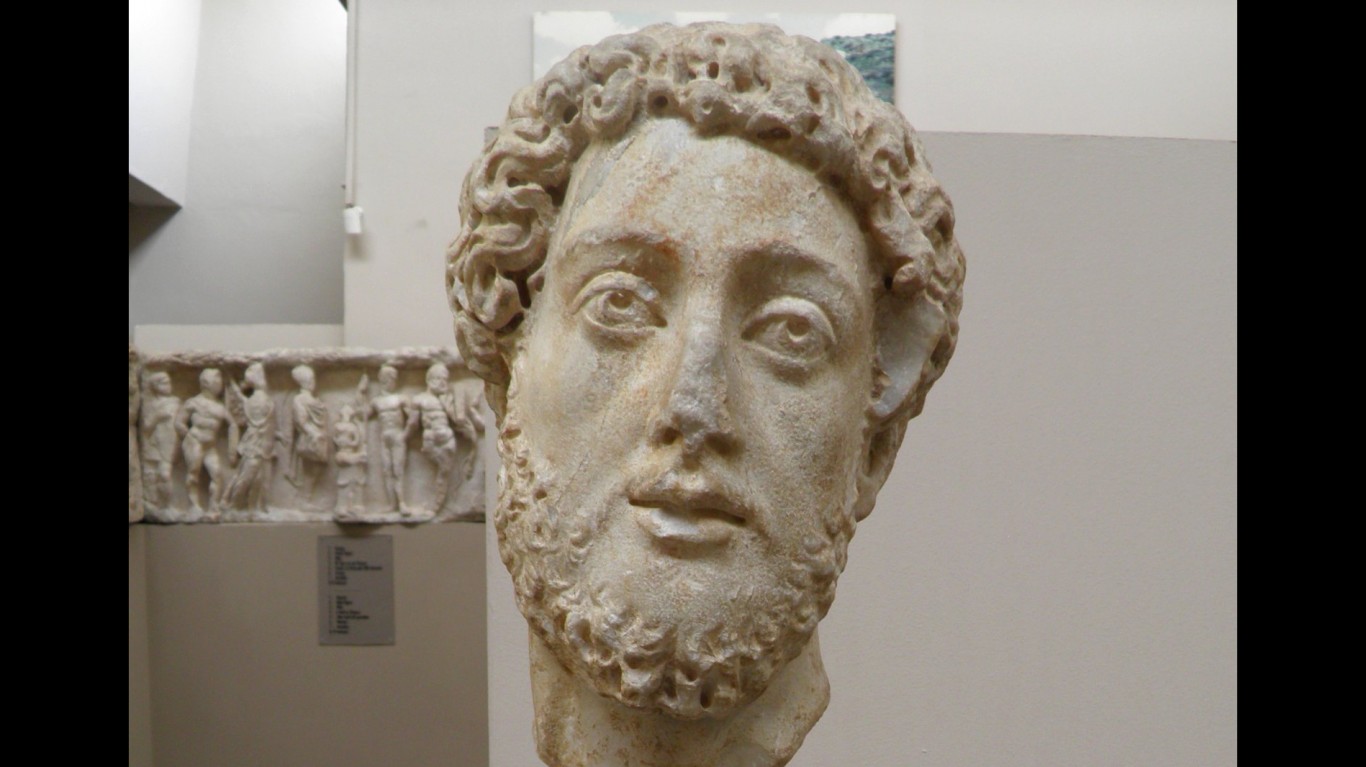
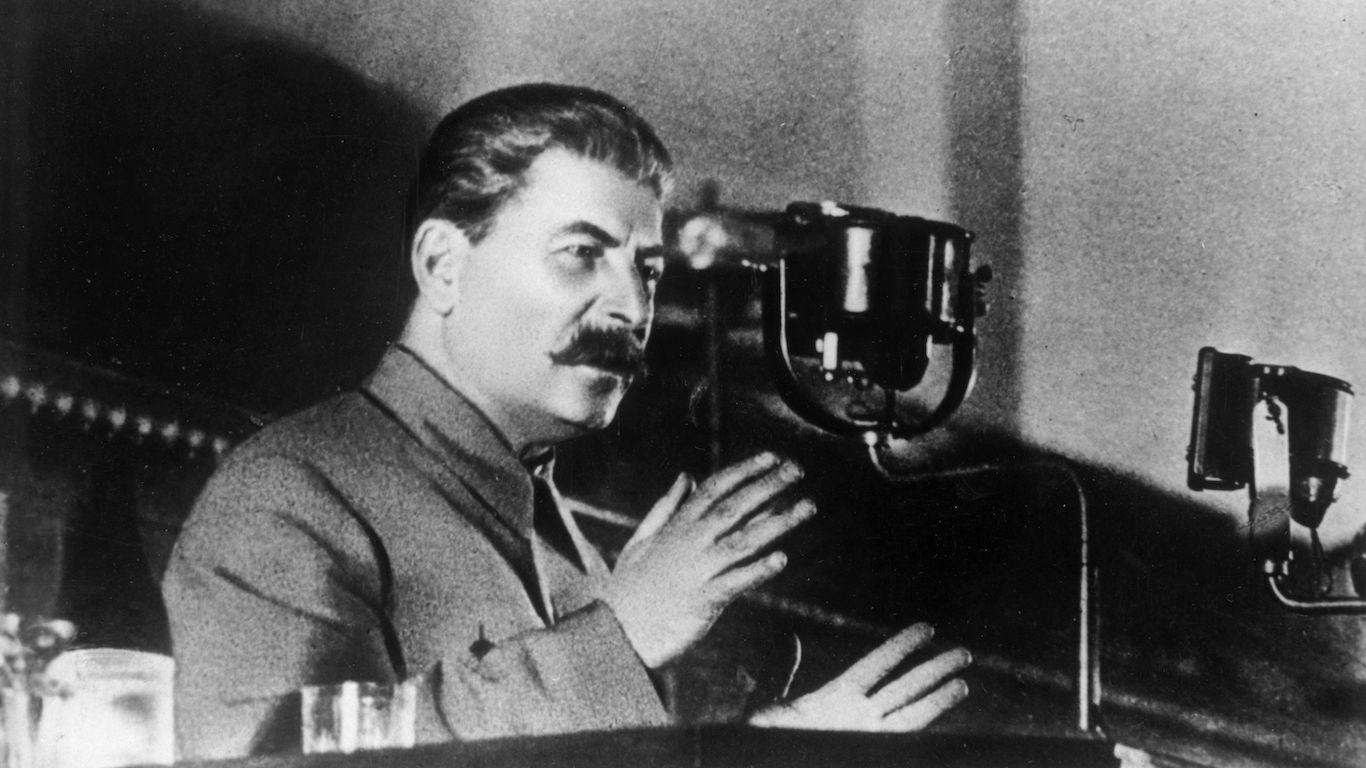 24/7 Wall St.
24/7 Wall St.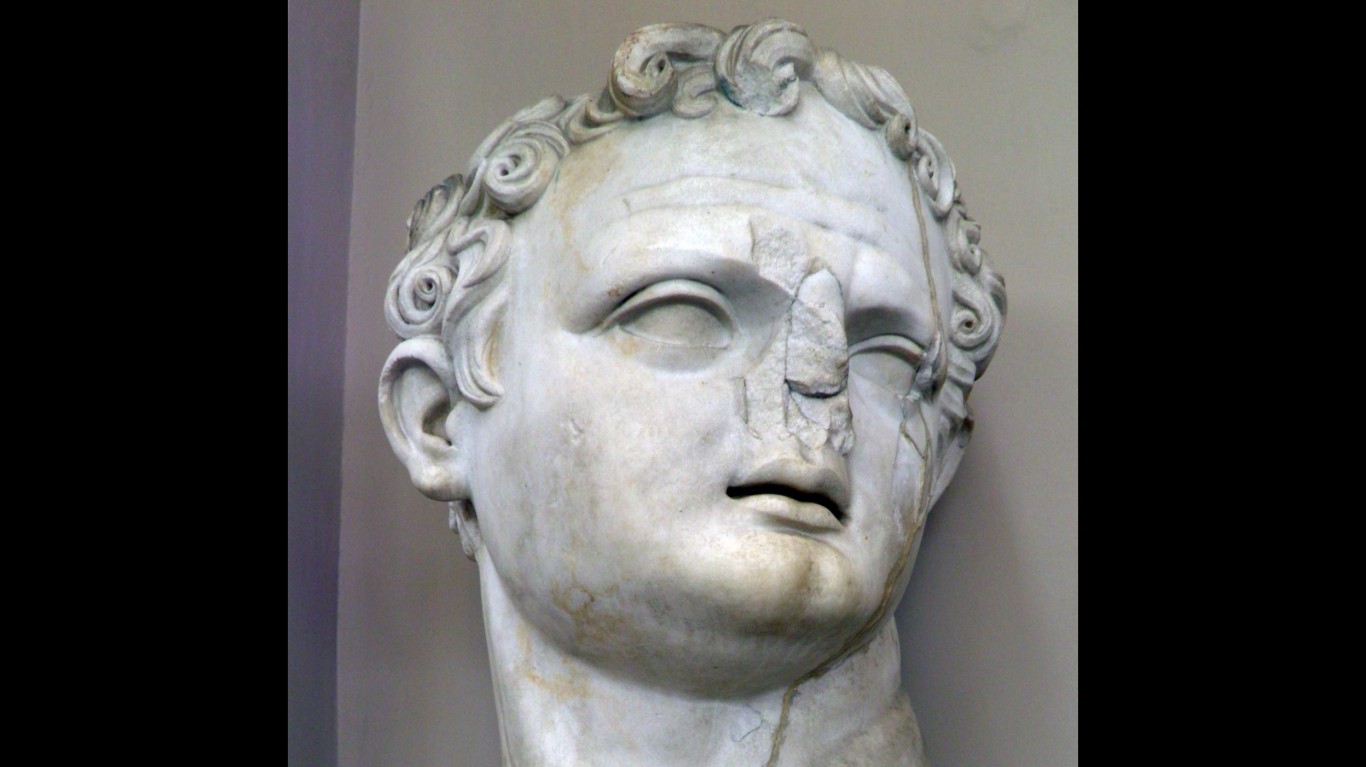
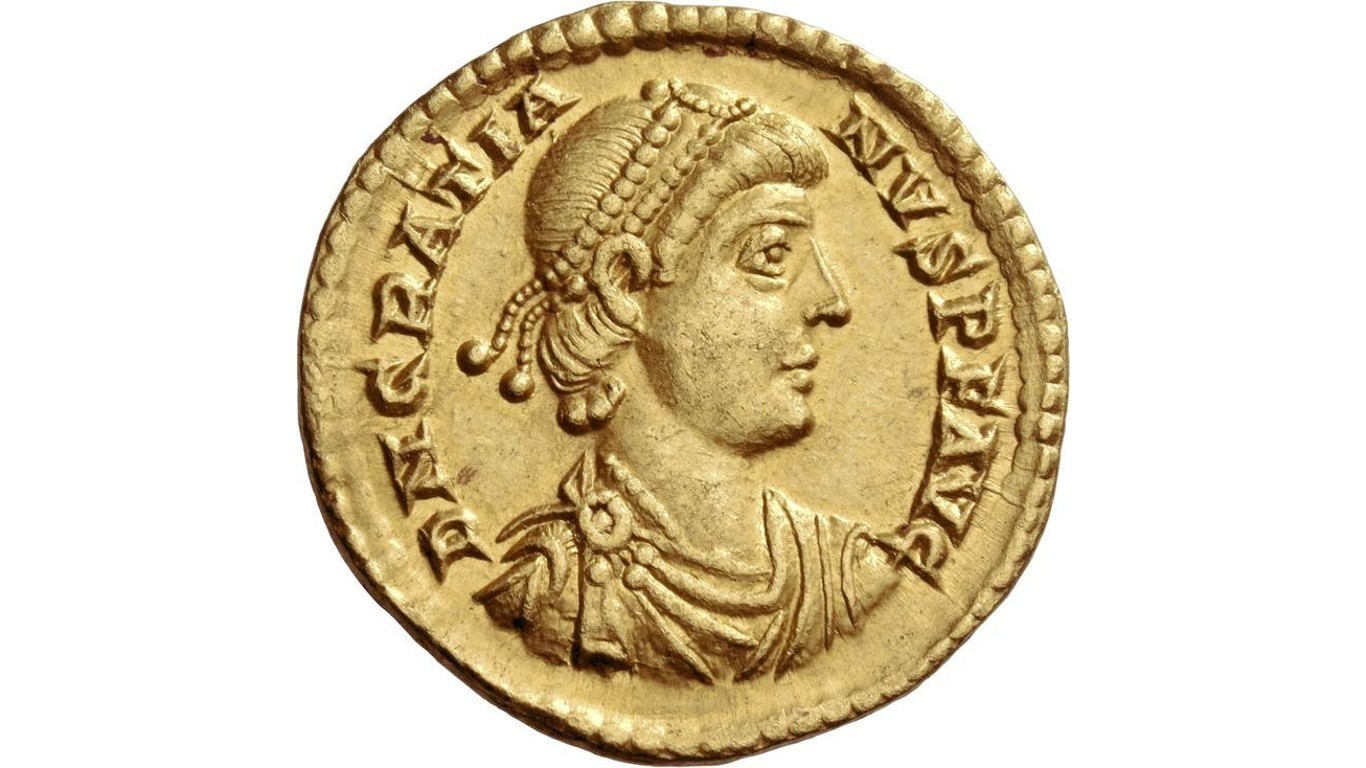
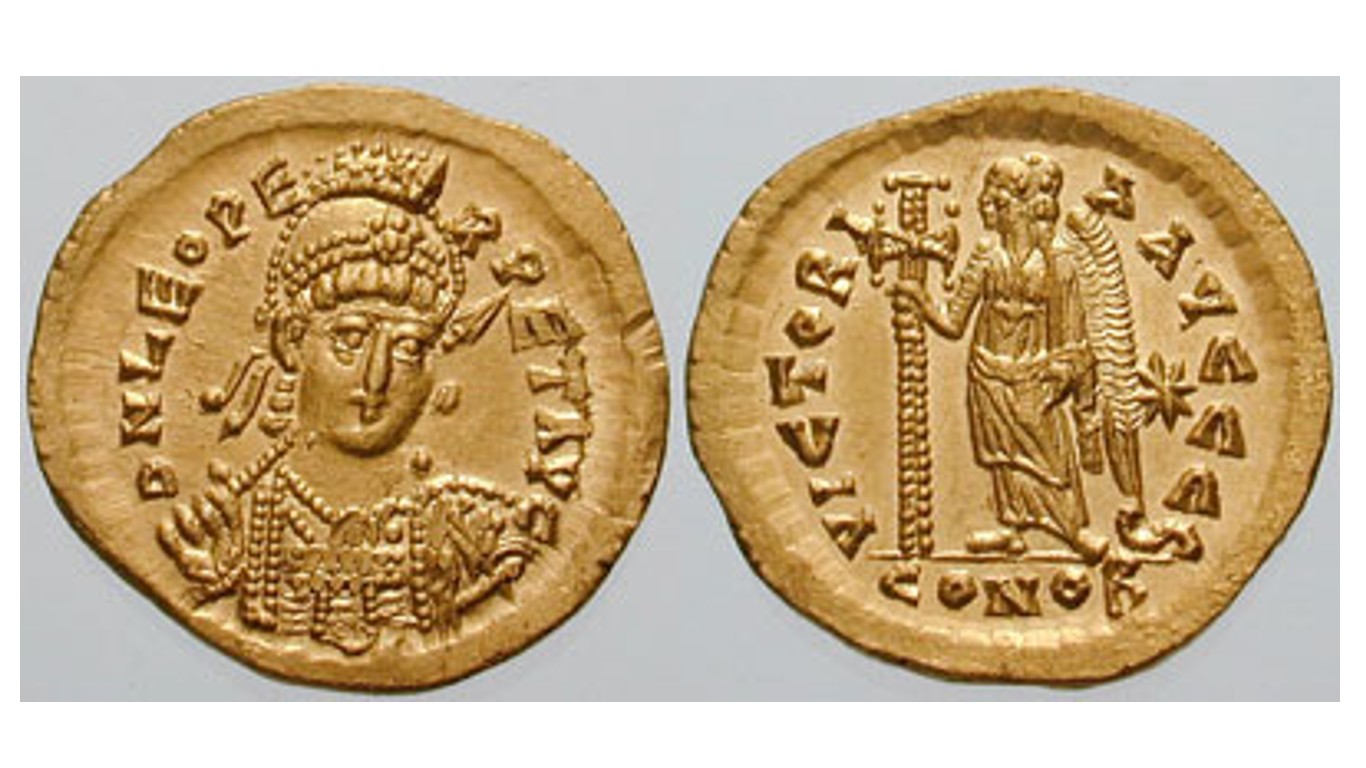
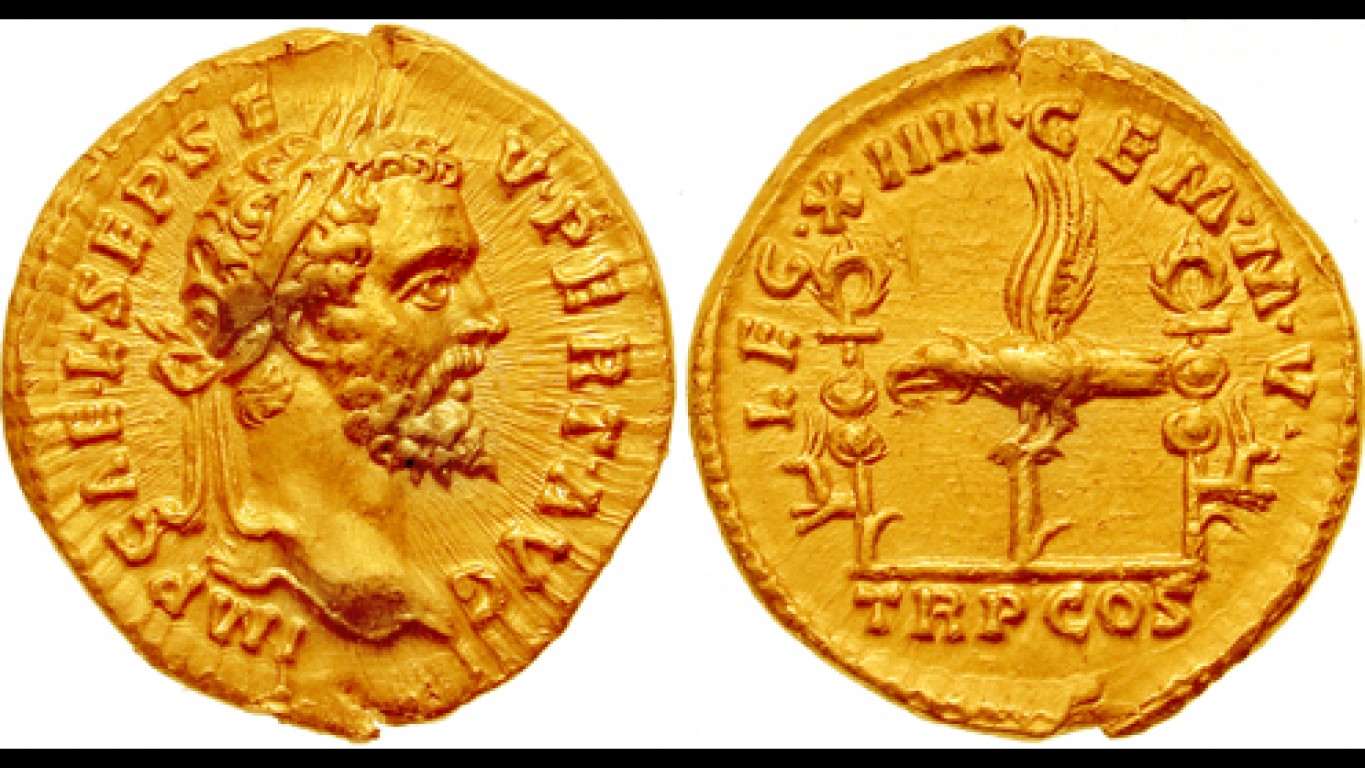
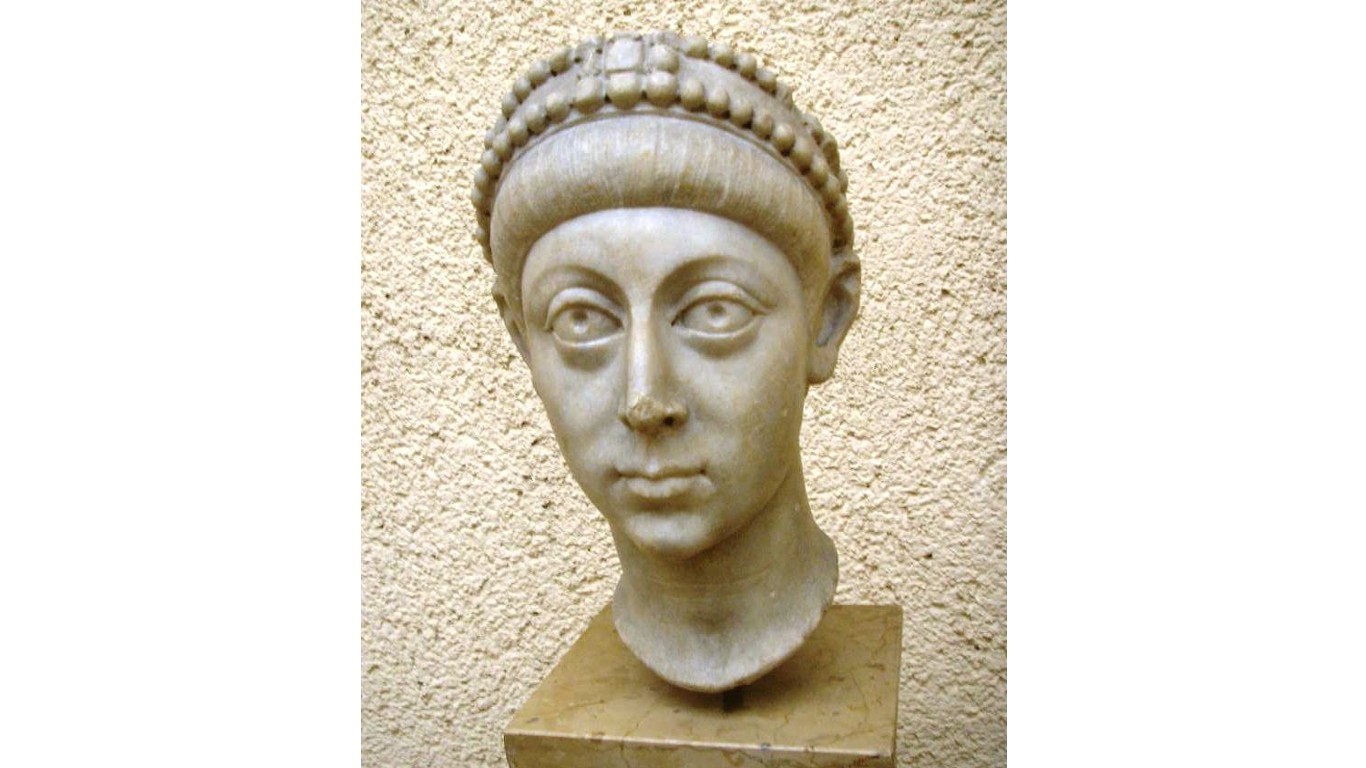
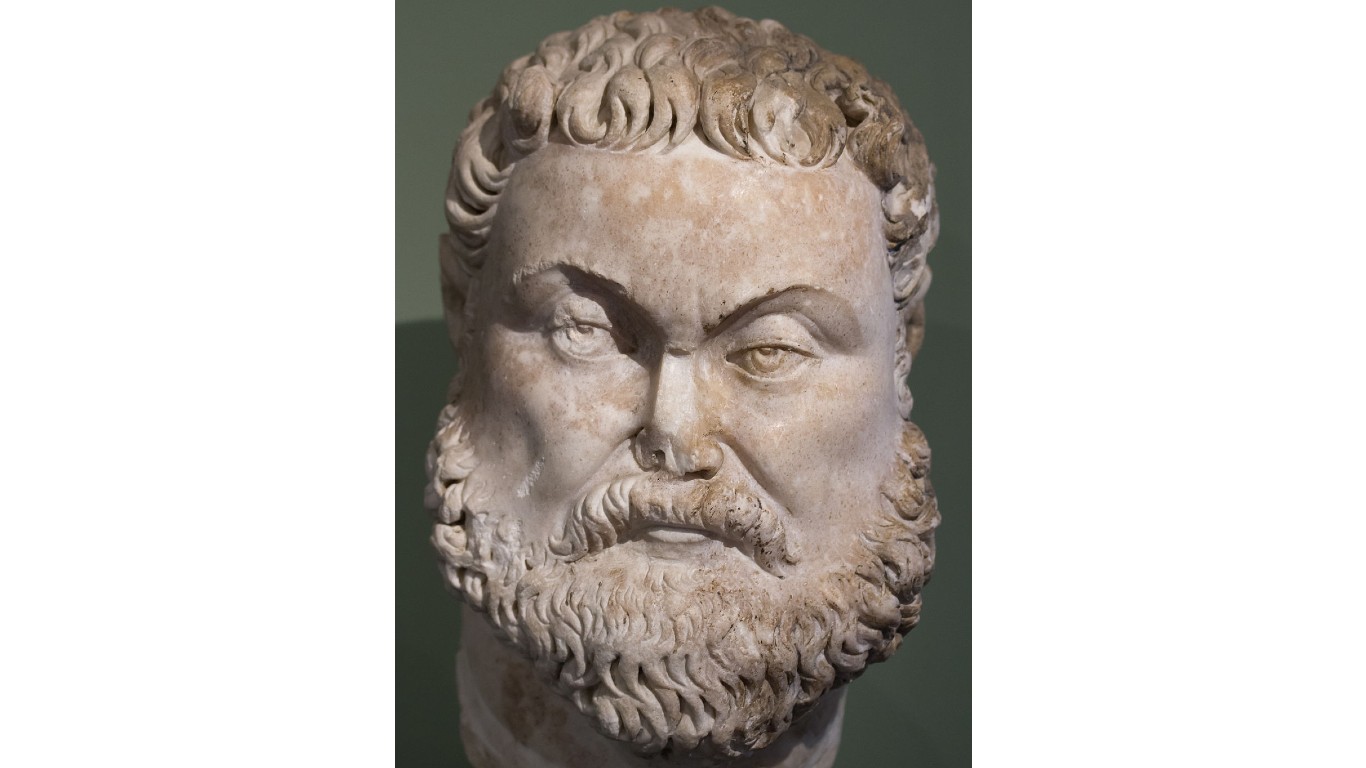
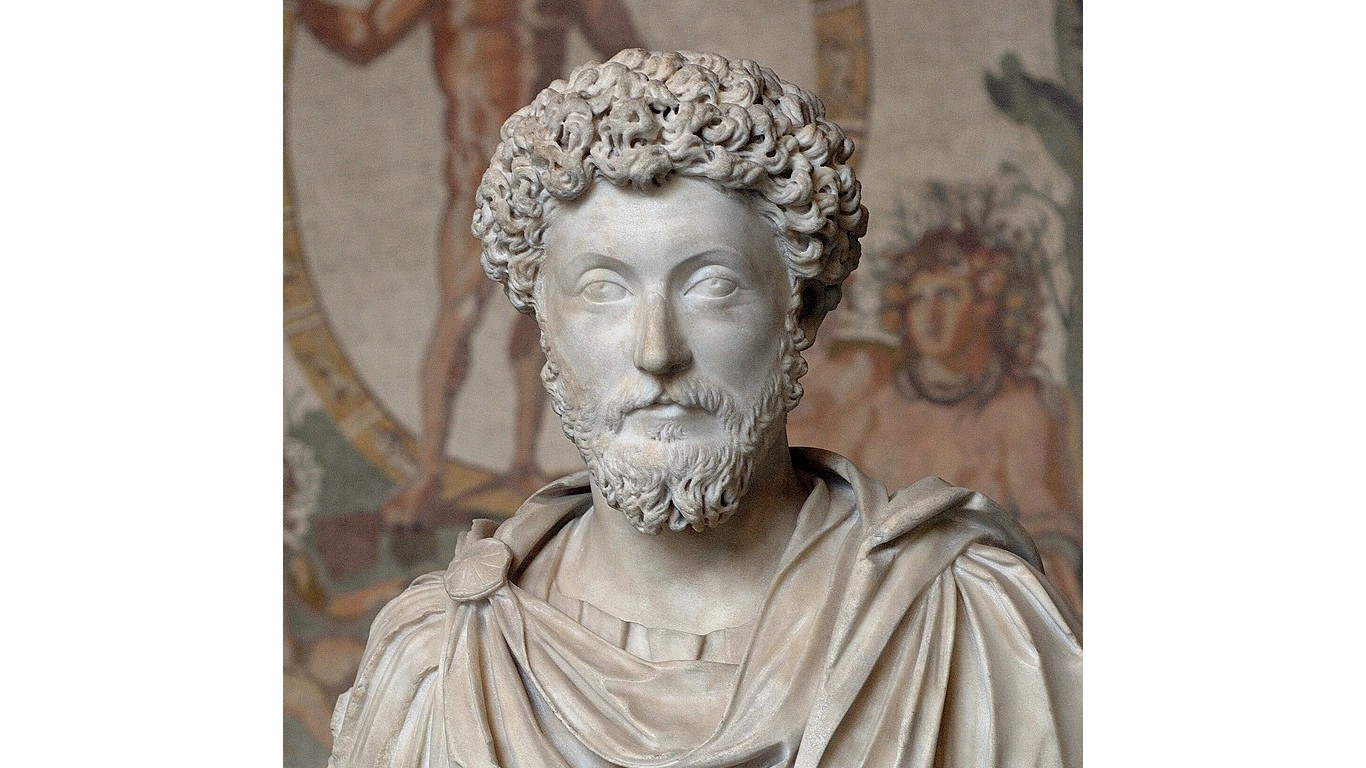
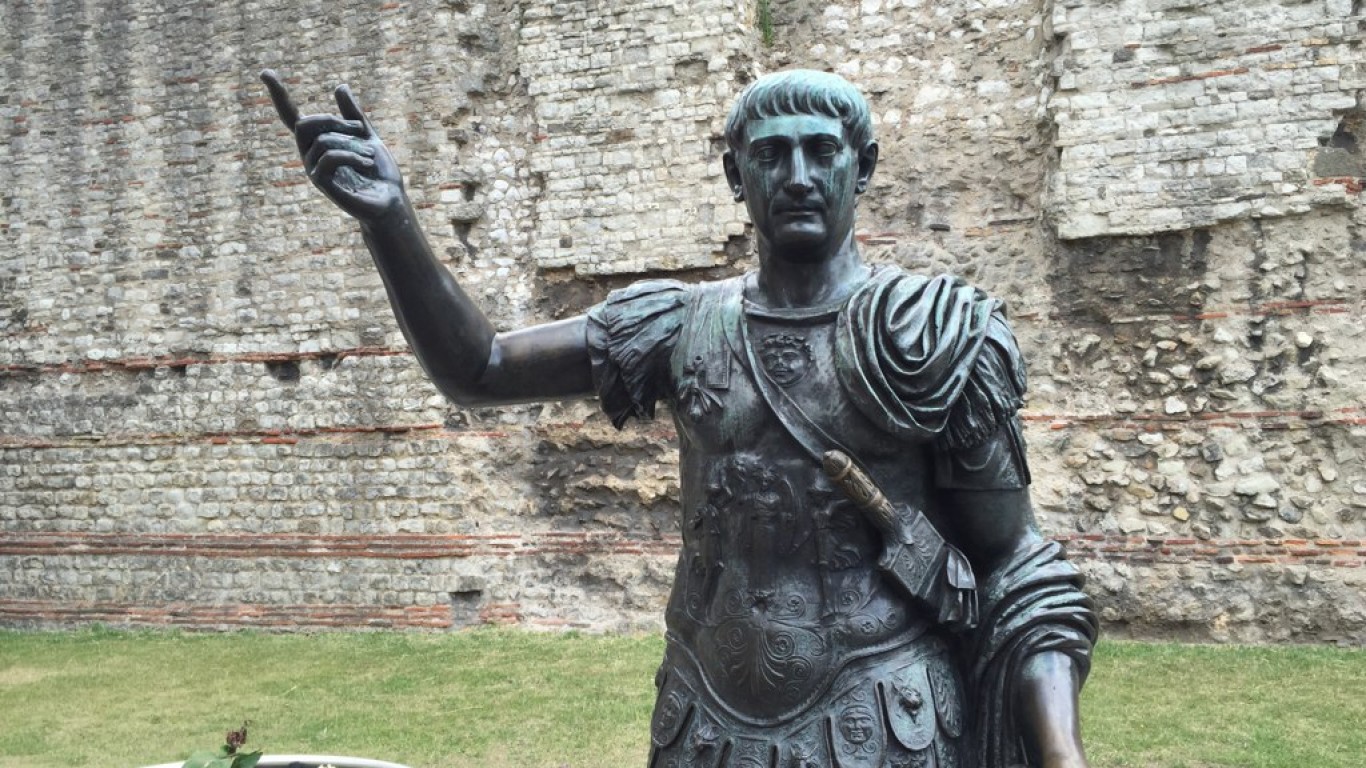
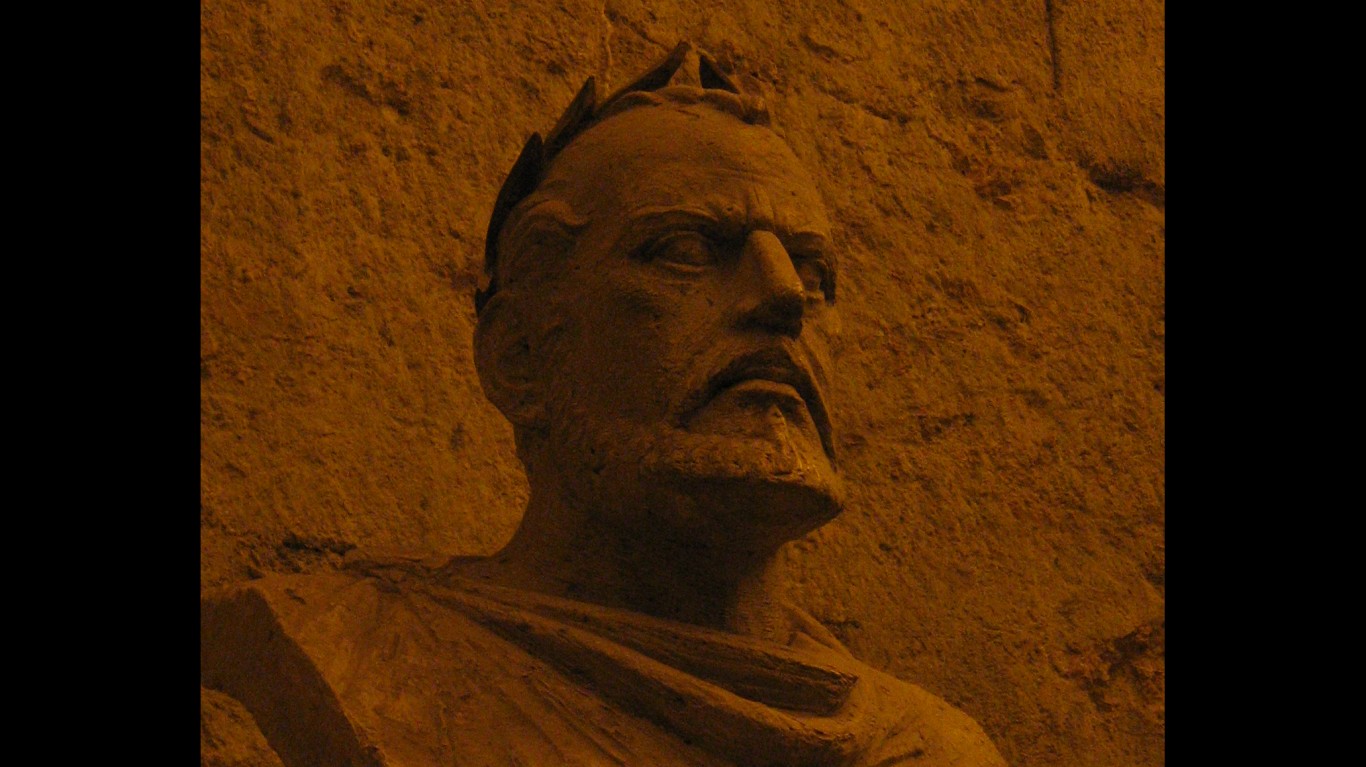
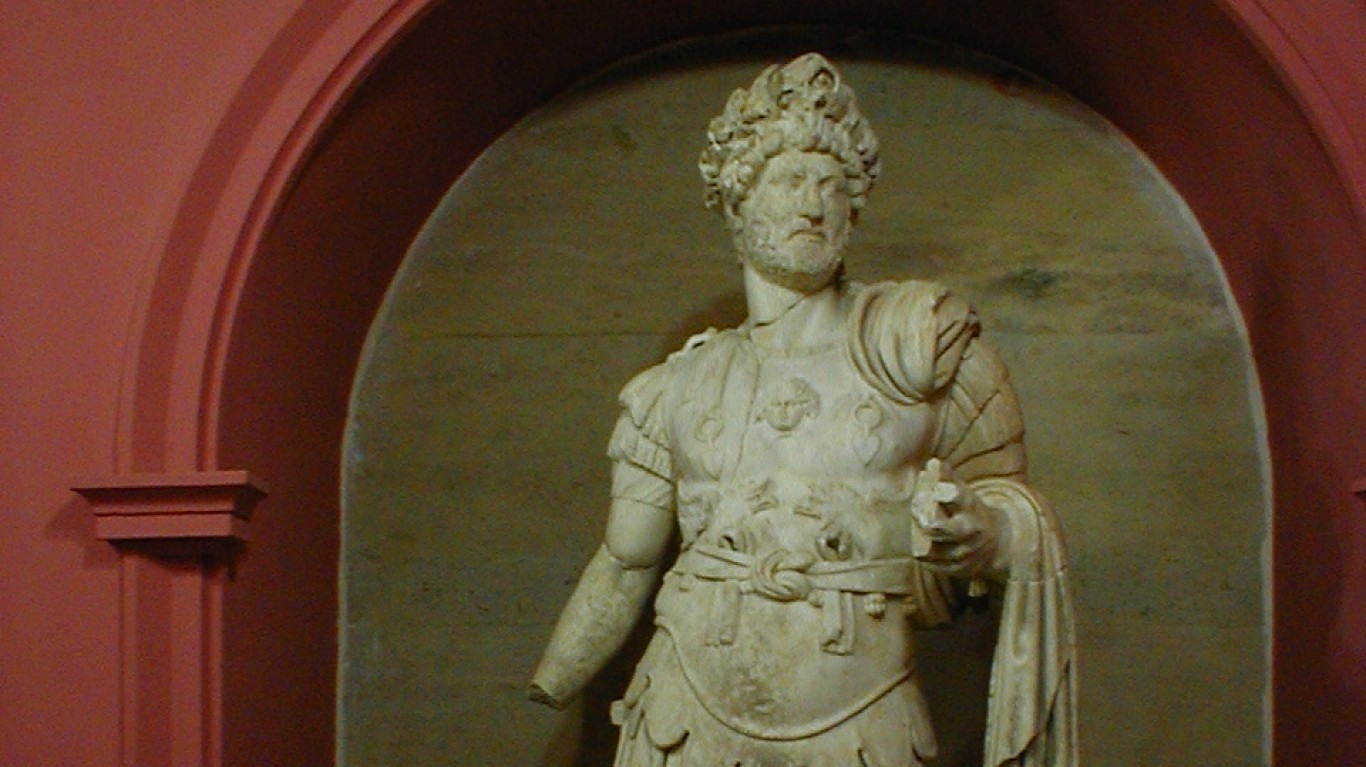
 24/7 Wall St.
24/7 Wall St.